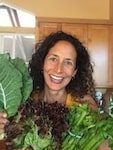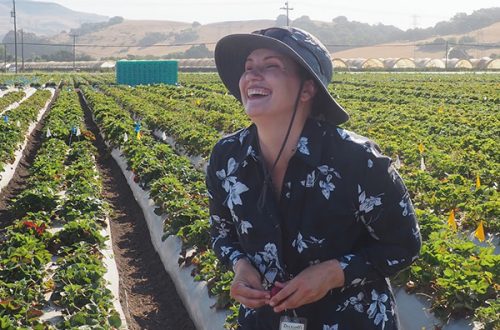Packaged Snack Bars: What Are We Really Serving our Kids?
By Kris Holden

I remember when my mom used to pack me a granola bar in my lunch. I think that was the only type of “bar,” back in the 70’s, made by Nature Valley. It was hard, crumbly and sweet. Looking at the same brand of bars today, I counted 11 ingredients listed and 3 are different sources of sugar. I wonder if the original bars had “natural flavor” as the current ones do now?
Nowadays, bars go by many different names: Cereal bars, Granola bars, Energy bars, Protein bars, Snack bars, and the list goes on. There are bars sold individually and bars packaged in boxes. It appears that the bars most targeted to children are packaged in boxes and conveniently located in the cereal aisle. These bars are right next to those sugary cereals with their enticing bright colors and familiar cartoon characters.

What a brilliant marketing strategy to label many of these bars as “cereal bars” or “breakfast bars.” What child wouldn’t want to eat brightly colored marshmallows in their cereal for breakfast and in their bar for a snack? I know, from experience, that bringing your child to the grocery store can lead to a lot of unintentional “yes’s” just to get out of the store as fast as possible. There have been several moments of, “How did that get in my grocery cart?” while unpacking the groceries at home.
As a parent, it’s challenging to navigate our way down these aisles, especially with our children. The children want the bars that are flavored like their favorite candy bar and we, the parents, want the bars that will actually have some nutrition and provide sustained energy. Another challenge is navigating through ingredient lists. On the front of the box it’s clearly marked, “all natural,” but looking through the ingredients there’s not many items I would consider “natural.” I had read that since the FDA hasn’t officially defined the term, “natural,” it can be used to describe almost any type of food, including products with artificial flavors, colors and preservatives.
Some of the ingredients I have come across, in cereal bars, are: red 40, blue 1, yellow 5, natural and artificial flavors, BHA, TBHQ and BHT. Upon doing some research on BHA, TBHQ and BHT, I read they are widely used by the food industry as an additive to preserve processed foods. But food isn’t the only place you’ll find these additives. They’re also included in cosmetics, jet fuels, rubber, petroleum products and embalming fluid. Natural and Artificial Flavor. Have you ever stopped to wonder what these words mean? Isn’t natural supposed to be better? What I learned is that they’re not much different from each other.
Natural and artificial flavors both contain chemicals that are created in laboratories and both are used to make processed foods enticing and addictive. The distinction between the two is the source of the chemicals.
Artificial flavors are created by combining chemicals from inedible ingredients, such as paper pulp or petroleum.
Natural flavors are created from anything that can be eaten, such as any animal source or vegetables. Due to the high cost of extracting natural chemicals from nature many are reproduced by scientists to create synthetic versions in a lab. Artificial flavors cost less to produce and potentially safer because they undergo stricter safety evaluations than natural flavors. The FDA does not require food manufacturers to list what’s in their artificial or natural flavor formulas. Castoreum, a flavoring that is derived from the anal gland of beavers, is used to emulate flavors like vanilla. This would be considered a “natural” flavor.
If you purchase a certified organic product that lists “natural flavors” or “organic natural flavors” it is made just like other organic ingredients and needs to follow the same regulations – such as no synthetic ingredients, preservatives, GMOs or MSG.
How do we get around all these added ingredients? Buy less packaged foods and more whole foods, plantbased, grains and legumes. Prepare your own nutritious and delicious snacks. You’ll save money, know what’s really in the food you and your kids eat and the beavers will be happier.
“No Bake Chocolate Peanut Butter Granola Bars,” recipe is one I’ve made many times for my family. It’s plantbased, has no added oils and provides fiber, protein and complex carbohydrates (the good kind your body likes for sustained energy.)
Recipe: No Bake Chocolate Peanut Butter Granola Bars
Makes: 10-12 bars.
1/2 cup creamy peanut butter.
1/2 cup honey.
1/4 cup cacao powder.
1 1/2 cups organic oats.
1 cup sprouted brown rice crisp cereal
(I used cacao brown rice crisp cereal)
1/4 cup chocolate chips (I use bittersweet, less sugar.)
optional add-ins: raisins, dried cranberries, peanuts or chia seeds.
INSTRUCTIONS:
Line an 8×8 baking pan with parchment paper and set aside.
In a small saucepan, warm the peanut butter and honey and mix until fully combined.
Pour the peanut butter and honey mixture into a large bowl, add in the cacao powder and mix well.
Stir in the oats until fully combined and then the brown rice crisp cereal and chocolate chips.
Scoop the mixture into the prepared baking pan. Using your hands, firmly press the mixture into the pan.
Refrigerate for 1-2 hours or until the bars are set. Remove the bars from the pan and cut into 10-12 bars.
Store bars in an air-tight container, in the refrigerator, for up to one week.
*Note:
*1/3 cup of oatmeal has the same amount of protein as one egg, plus it has 4 grams of fiber.
*Using whole grain brown rice crisps cereal provides additional fiber as well.
*Using cacao powder instead of cocoa powder adds additional antioxidants, potassium and magnesium.
Recipe has been slightly modified from its original recipe by livewellbakeoften.com
Kris Holden is a mother of 3 teens. She’s always been passionate about health and nutrition and eager to share with others what’s worked for her and her family. She’s a Feel Good Coach with focus on healing and energizing through a plant based whole foods lifestyle. You can view other recipes and healthy food selections on Instagram @feelgoodpicks. Email: [email protected]







